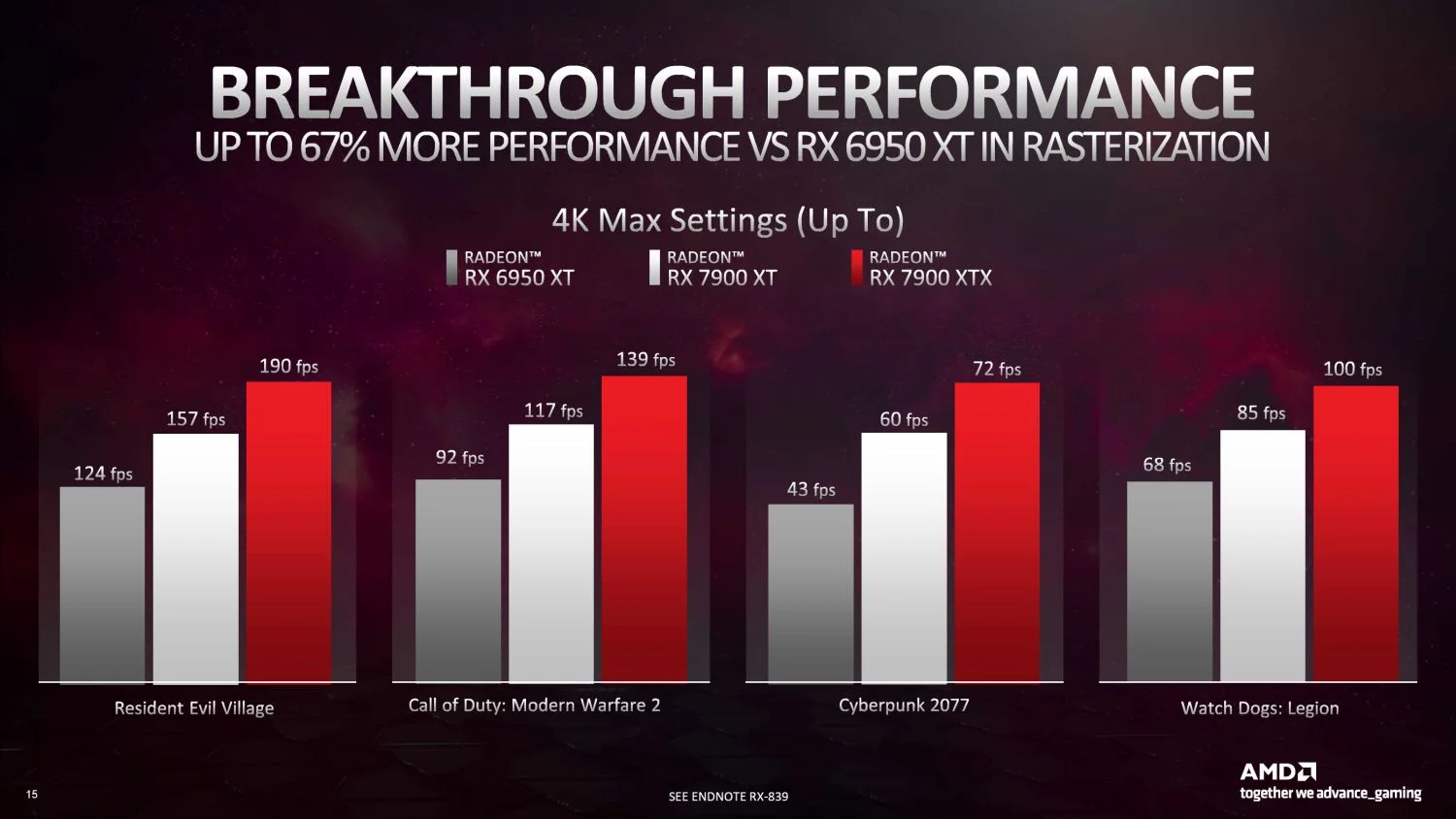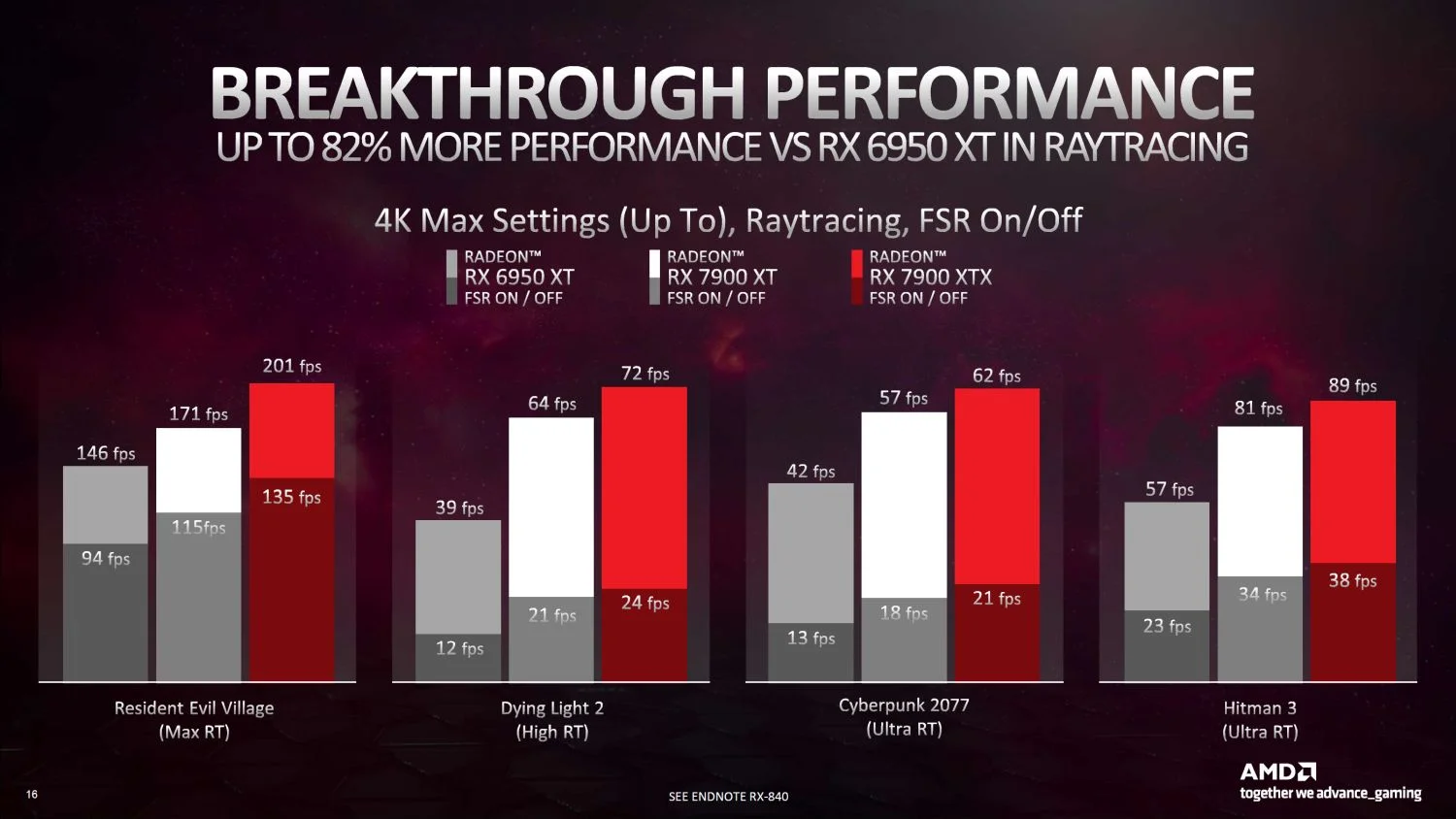Before we begin, it should be noted that AMD has told us and other members of the media that were present during the event that the defacto rival to its RX 7900 XTX and XT will be NVIDIA’s GeForce RTX 4080, a card that we reviewed and recently just became available. Having said that, the CPU and GPU maker has yet to provide us with a sample of either card, in order for us to substantiate that claim. So, even if these numbers were obtained by its own engineers, we’ll be reserving judgement until then. Getting back on point, the slides in question show the performance of both the Radeon RX 7900 XTX and XT, pitted against AMD’s previous generation RDNA2-powered flagship card, the RX 6950 XT. Also, all three cards were seemingly benchmarked at 4K resolutions, and across four titles. The first slide basically shows the performance improvements of the RX 7900 XTX and XT in terms of raw power and rasterisation. On average, both cards show as much as a 67% improvement in performance, with the XTX achieving 72 fps at 4K max settings on Cyberpunk 2077, while the XT sat comfortably on a 60 fps average on the same title. The second slide shows both the Radeon 7900 XTX and XT’s performance when ray-tracing is thrown into the fold and in this case, with AMD’s updated FidelityFX Super Resolution (FSR) upscaling technology turned on and off. Again, the maximum resolution is set at 4K and each title’s graphics presets are maxed out. Based on the graphs, FSR has clearly improved to a point where it can lift even the performance of the RDNA3 cards up and beyond the 30 fps threshold. In this case, we can see both the Radeon RX 7900 XT and XTX running at 57 fps and 62 fps respectively, in Cyberpunk 2077, and well into the 80 fps average for Hitman 3. Both of which happen to be titles that are heavy in their use of global illuminations and reflections. AMD’s Radeon RX 7900 series graphics cards are expected to be available from 13 December onwards, so hopefully, the company will pass us the cards before then, in order to benchmark them before then. (Source: AMD)

